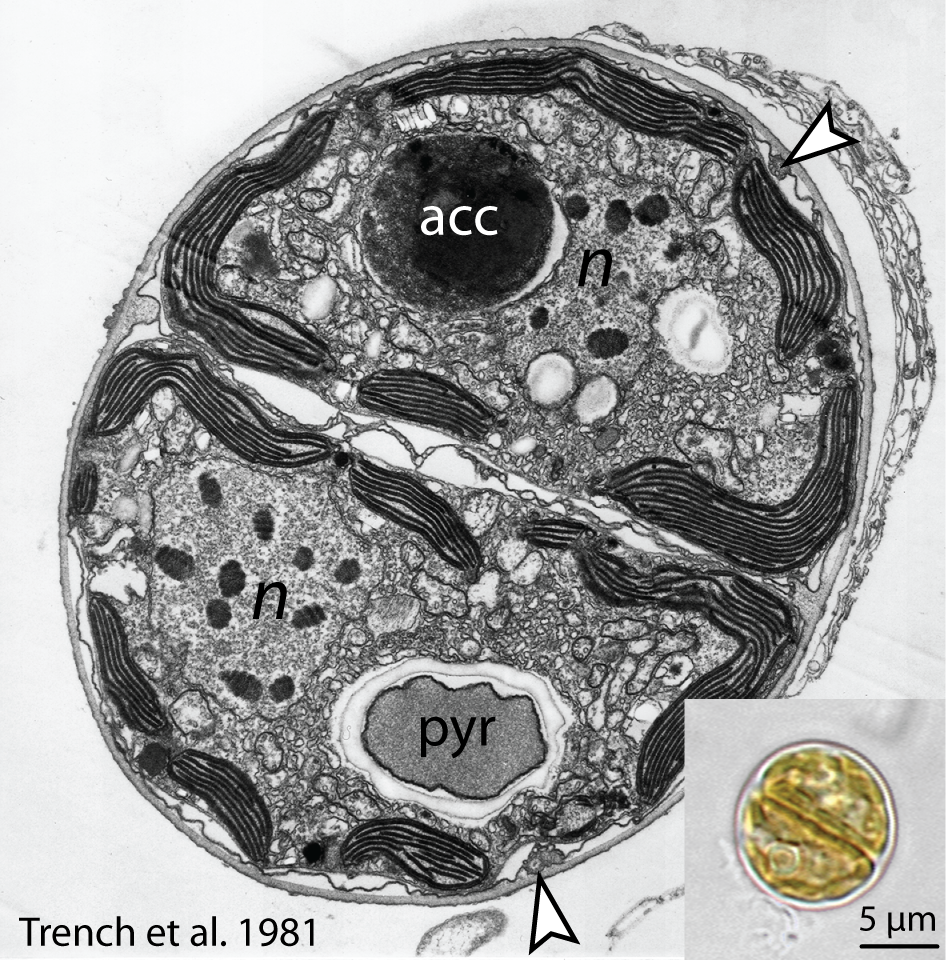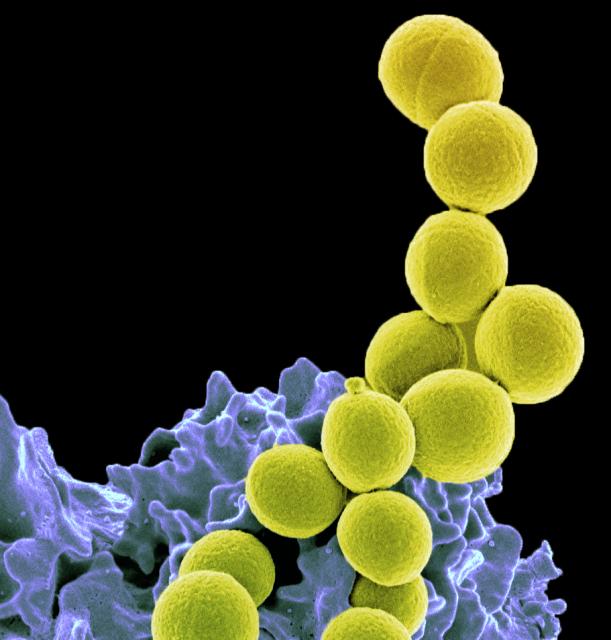GCSE Biology - AQA
4.2.1 - Introduction to Cell Division
Jump to:
Introduction to Cell Division
Cell division is when one cell divides to form two cells. It is the process by which new cells are made.

A cell in the process of dividing. The main image was captured with an electron microscope. The smaller image in the corner was captured with a light microscope. Image: Allisonmlewis on Wikimedia Commons (CC BY-SA 4.0 - https://creativecommons.org/licenses/by-sa/4.0/deed.en)
The process of cell division is different in prokaryotic cells and eukaryotic cells. However, there are some things that they have in common.
On this page, we will look at the aspects of cell division that apply to all organisms. Then, on the next page, we will look specifically at cell division in eukaryotes. On the page after that, we will look specifically at cell division in prokaryotes.
Before a cell divides, it usually grows, copies its sub-cellular structures, and copies its DNA
In both prokaryotic and eukaryotic cells, there are certain things that usually happen before a cell divides. These are the following:
- The cell grows.
- Sub-cellular structures (e.g. mitochondria in eukaryotes, and ribosomes in both eukaryotes and prokaryotes) are copied to make more of them.
- The DNA is copied.
Once these things have taken place, the cell divides.
Cells can divide repeatedly in a process called the cell cycle
In both prokaryotes and eukaryotes, these steps can take place repeatedly. In other words, a cell grows, copies its sub-cellular structures and DNA, and then divides to form two cells. Each of those two cells then grows, copies its sub-cellular structures, and divides, resulting in a total of four cells. Each of those cells then does the same, and so on.
This repeating process is called the cell cycle.
On the next page we will look in more detail at the cell cycle in eukaryotes. After that, we will look at the cell cycle in prokaryotes.

Bacterial cells. Like the cells of all organisms, they are able to repeatedly divide and grow in a process called the cell cycle. This image was captured with an electron microscope. The colours have been added artificially on a computer.
Flashcards
Flashcards help you memorise information quickly. Copy each question onto its own flashcard and then write the answer on the other side. Testing yourself on these regularly will enable you to learn much more quickly than just reading and making notes.
1/3
What is cell division?
2/3
What things usually happen before a cell divides?
3/3
What is the cell cycle?
Next Page
4.2.2 - Cell Division in Eukaryotes
Previous Page
4.1.6 - Uses of Plant Stem Cells
Return to course page
Donate
Please consider donating to support Mooramo. I am one person doing this whole project on my own - including building the site, writing the content, creating illustrations and making revision resources. By making a one-time or repeating donation you will buy me time to work on Mooramo, meaning that I can get new content on here more quickly.
Donate